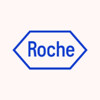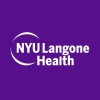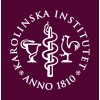
A Study Evaluating the Safety and Efficacy of Idasanutlin in Combination With Cytarabine and Daunorubicin...
Acute Myeloid LeukemiaThis Phase Ib/II, open-label, multicenter, non-randomized study will evaluate the safety, efficacy, and pharmacokinetics of idasanutlin when it is given in combination with cytarabine and daunorubicin in induction, in combination with cytarabine in consolidation, and as a single agent in maintenance for treating participants with acute myeloid leukemia (AML).

Pevonedistat and Azacitidine as Maintenance Therapy After Allogeneic Stem Cell Transplantation for...
Acute Myeloid Leukemia (AML)This research is being done to find out the toxicity and efficacy of a combination of Pevonedistat and Azacitidine as post allogeneic hematopoietic stem cell transplant maintenance therapy for non-remission AML and to see the overall diseases free survival, relapse, and GVHD after treatment.

Iclusig PMS in CML or Ph+ALL Patients
Chronic Myeloid LeukemiaPhiladelphia Chromosome-positive Acute Lymphoblastic LeukemiaThis is a Post-Marketing Surveillance (PMS) of Iclusig® Tablets in accordance with Korean regulations on Risk Management Plan (RMP). This PMS is to assess safety and effectiveness data after administrating Ponatinib (of Iclusig® Tablets) per approved indication, usage and dosage.

AZD1775 in Advanced Acute Myeloid Leukemia, Myelodysplastic Syndrome and Myelofibrosis
MyelofibrosesAcute Myeloid Leukemia1 moreA phase II study testing the efficacy of combined AZD1775 with AraC or single agent activity of AZD1775 in three arms: Arm A has subjects age 60 years or older who are newly diagnosed with AML receiving the combination of the drugs; Arm B has subjects who are have relapsed/refractory AML and HMA failure MDS patients being allocated to either the combination Arm B or single agent AZD1775 Arm C.

A Study of ASTX660 as a Single Agent and in Combination With ASTX727 in Subjects With Relapsed/Refractory...
Acute Myeloid LeukemiaTo evaluate the safety, pharmacokinetics (PK), and efficacy of ASTX660 when given alone and in combination with ASTX727 in participants with relapsed/refractory (R/R) acute myeloid leukemia (AML). The duration of the study is expected to be approximately 30 months.

A Study Evaluating the Safety and Pharmacokinetics of ABBV-744 in Participants With Relapsed/Refractory...
Acute Myeloid Leukemia (AML)This is an open-label, Phase 1, dose-escalation (Segment 1) and expansion (Segment 2) study to determine the maximum tolerated dose (MTD) and/or the recommended phase two dose (RPTD), and to assess the safety, preliminary efficacy, and pharmacokinetic (PK) profile of ABBV-744 in participants with relapsed/refractory Acute Myeloid Leukemia (AML).

Blinatumomab for MRD in Pre-B ALL Patients Following Stem Cell Transplant
B-cell Adult Acute Lymphoblastic LeukemiaStem Cell Leukemia1 moreThis is a single arm, open label, multi-centre phase II study using blinatumomab for treatment of detectable minimal residual disease (MRD) in the first year following allogeneic hematopoietic stem cell transplant (HSCT) for patients with B cell acute lymphoblastic leukemia (B-ALL). The study has 2 phases: 1. MRD testing phase and 2. blinatumomab treatment phase. Participants with B-ALL planning for HSCT meeting other eligibility criteria will be enrolled onto the MRD testing phase, which will involve centralized MRD testing of bone marrow aspirate samples on day +56, +100, +180, +270 following HSCT. Participants with detectable MRD ≥10^-4 leukemic cells/total nucleated cells will enroll onto the treatment phase. Blinatumomab treatment will be started following detection of MRD after 7 to 42 days from enrollment onto the treatment phase to allow for initiation of taper of immunosuppressive medications.

Randomized Clinical Study Assessing Haplo vs. URD in AML
Acute Myeloid LeukemiaThis study compares haplo-identical family donor stem cell transplantation (haplo SCT) to matched unrelated donor transplantation (URD SCT) in adult patients with acute myeloid leukemia (AML) with the hypothesis that haplo SCT is as good as URD SCT. Background: A haplo-identical family donor is a relative sharing 50% of the human leukocyte antigens (HLA) of the patient. SCT with this type of donor is increasing, and a number of retrospective studies have demonstrated its feasibility, but prospective randomized studies are still lacking. Such studies are necessary to establish the benefits of haplo SCT. For the ≈70% of the patients that lack the 1st choice donor, an HLA-matched sibling, the 2nd choice is an URD at most centers. However, if haplo-identical donors are as good as URDs, this could change. Haplo-identical donors have several advantages. Almost all patients have at least one available haplo-identical donor, while URDs can be difficult to find. It also eliminates the need for time-consuming donor searches, and is considerably less costly. The Study: Patients can be included in the study if they have AML and require SCT, ≥18 years, DO NOT have an HLA-matched sibling donor, and DO have potential haplo-identical family donors AND URDs. After enrollment in the study, the patients are assigned randomly to either haplo SCT or URD SCT. The treatment surrounding the transplantation differs according to the donor type. Patients receiving haplo-identical transplantation are treated with a specified chemotherapy protocol before transplantation and a chemotherapy combined with immunosuppressive drugs after the transplantation to prevent graft-vs. host disease (GVHD). The patients receiving URD SCT will be treated according to the standard protocol at their center. Thus, haplo SCT will be compared to what is currently used in patients without an HLA-identical sibling today. The primary endpoint of this study is graft-vs.-host disease- and relapse free survival two years after study inclusion. This measurement takes into account the side effect that causes the most long-term suffering, graft-vs-host disease, as well as leukemia relapse and thus indicates to what extent the treated patients remain relapse-free and without significant side effects. Secondary end points include relapse-free survival, frequencies of graft-versus-host disease and of infections, and the patients will be followed in the study for five years.

Overweight and Obesity as Prognostic Factors for Survival in Children With Acute Lymphoblastic Leukemia...
LeukemiaLymphoblasticBackground: Mexico City has one of the highest incidences and mortality rates of acute lymphoblastic leukemia (ALL) in the world and a high frequency of early relapses (17%) and early mortality (15%). Otherwise, childhood overweight and obesity are reaching epidemic proportions. They have been associated with poor outcomes in children with ALL. The aim of present study is to identify if overweight and obesity are prognostic factors associated with survival rates in Mexican children with ALL. Methods: Multicenter cohort study. ALL children younger than 15 years old are included and followed-up. Overweight and obesity are classified according World Health Organization (WHO) and Centers for Disease Control and Prevention (CDC) criteria. Deaths and relapses are the main outcomes.

Low-Intensity Chemotherapy and Blinatumomab in Treating Patients With Philadelphia Chromosome Negative...
Philadelphia Chromosome NegativeRecurrent B Acute Lymphoblastic Leukemia1 moreThis phase II trial studies how well low-intensity chemotherapy and blinatumomab work in treating patients with Philadelphia chromosome negative acute lymphoblastic leukemia that has come back or does not respond to treatment. Drugs used in chemotherapy, such as dexamethasone, filgrastim, pegfilgrastim, cyclophosphamide, methotrexate, cytarabine and vincristine sulfate, work in different ways to stop the growth of tumor cells, either by killing the cells, by stopping them from dividing, or by stopping them from spreading. Immunotherapy with monoclonal antibodies, such as blinatumomab, may help the body's immune system attack the cancer, and may interfere with the ability of tumor cells to grow and spread. Giving low-intensity chemotherapy and blinatumomab may work better at treating acute lymphoblastic leukemia.
